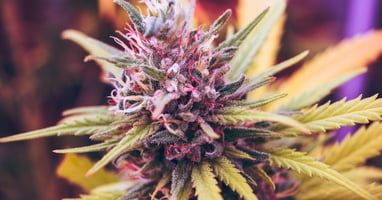How to Choose the Right Cannabis Strain Whether you are new to the cannabis community or consider...
Indica, Sativa, and Hybrid: What Strain of Marijuana Best Fits Your Individual Needs?

The first time you walk into a dispensary, the budtender will ask you what you are looking for: Indica, sativa, or a hybrid of the two? Many times, this confuses unfamiliar consumers who aren't entirely knowledgeable about the different branches, or chemovars, of marijuana and what benefits they specifically contain. These customers are easily spotted as they always answer with the same statement: Huh?
And that's okay because the budtenders are there to help you out. But, if you go into the dispensary having done some research on the subject then your conversations with your budtender will be on a deeper level and much more informative. You can be confident that you are making the most effective choice for yourself.
So, what are indica and sativa? Which would be better for your particular problems? Or, what in the heck is a hybrid? Your 'Huh?' is actually a great question.
Terpenes and Cannabinoids
To truly understand the basic differences and real connections between the two chemovars, indica and sativa, you should know what terpenes and cannabinoids are and how they potentially affect the performance of the medication. They are what determines how you will react to a particular type of bud, more than the name and chemovar designation will.
Terpenes
Terpenes is a mixture of the 80-100 different oils released by the resin glands in the marijuana plant. These oils determine the smell of the plant and how the cannabinoids will work in your individual body. Terpenes are found in many plants and animals, not just in cannabis, and they are more apparent after the plant is dried.
People once thought that terpenes had nothing to do with the effects of marijuana, but it has recently been discovered to mimic cannabinoids and bind to the same receptors, thus causing its own effects on the individual. Terpenes are different in every plant, so, in some circumstances, the terpenes in a sativa could actually affect a person more like a traditional indica, causing confusion.
In fact, our growing knowledge of terpenes allows us to create a wide variety of products better suited to each person's desired reaction. The terpenes work hand-in-hand with the cannabinoids to effectively customize your experience and give you the best results.
Cannabinoids
The resin glands also produce cannabinoids, otherwise known as the active ingredients in marijuana. Each type of plant can contain different measurements of dozens of different cannabinoid compounds that also effect your experience and blur the lines between indica and sativa.
One compound may lessen pain, while another increases your appetite, for example, like human DNA. While you may look, sound, or act like your parents or your brothers and sisters, you are not the same. Your DNA is unique, just as the compounds and oils in cannabis plants are.
The most famous cannabinoids are:
- CBD, or cannabidiol, known for its relaxation and drowsiness properties. It is also what can give you dry mouth and lessen your blood pressure.
- THC, or tetrahydrocannabinol, is the most powerful compound and the cause of euphoria, heavy limbs, and a more intense audio and visual experience.
- CBC, or cannabichromene, known for lessening pain and inflammation, as well as for lifting depression.
Researchers are looking into how all the compounds work together and independently to further streamline your choices and, perhaps, use the information to increase the plant's medicinal value. Again, much like human DNA, one compound may be more dominant than another. They can also cancel each other out.
Right now, most cannabis strains are placed into one of two categories, indica or sativa, based upon their chemical makeup and proven effects on the body. While some strains are exceptions to the rule, most can fall more easily into one side, rather than the other.
Indica
The indica plant, originally found in India, Afghanistan, and Turkey, is shorter, stouter, with wide, or broad, leaves. Indicas are also referred to as BLDs, or broad-leafed drugs, that tend to sedate a person, to an extent. Many indicas may have kush in their name and grow best in cold climates.
Indicas give you a sedated feeling because it affects the way your brain feels about your entire body, causing a sense of deep relaxation. They can also relieve consistent and moderate pain, insomnia, and anxiety. Indica works well in many patients with Parkinson's, MS, and any kind of arthritis, especially as it can help with inflammation. It has been known to help with nausea from chemo and encourages people to eat.
When you get overstimulated with people, lights, movement, etc., indica will allow you to sit back on the couch and shut down any intrusive thoughts. The perfect time for indica is at night, before bed. You'll find that as you try to fall asleep, those memories of that time you embarrassed yourself in school, or messed up at work, or whatever haunts you, will quiet down in your mind.
Using indica during the day will not put you to sleep, nor will it render you completely useless, but it does seem to slow time. If you need something that doesn't slow you down, but in fact, increases your energy, you will want to try a sativa.
Sativa
Sativa is stimulating. It originated in Africa, Central America, and Asia in areas where there is a lot of sun and a hot/dry climate. Typically, sativa has a higher concentration of THC than it does CBD, the ingredient that directly causes drowsiness. This means that your limbs aren't heavy, and you don't feel as sedated.
When compared to an indica plant, the sativa plants are much taller and the leaves much narrower. In fact, they can grow up to 20 feet high. Many strains have the word haze in their names and the budtenders are great at automatically knowing the difference.
Sativa is best used during the daytime and its effects are referred to as having a 'mind-high'. Side effects include:
- Reduction in anxiety
- Increased energy
- Heightened creativity
- Decrease in pain
- Lightening of depression
Sativa won't keep you awake at night, but it will give you the munchies and the will to start a project. But many cannabis strains are considered to be a hybrid form of both indica and sativa. What does that really mean?
Hybrid
Hybrid cannabis plants are created in labs and greenhouses all over the world. Each strain is unique and built from a variety of different terpenes and cannabinoids. The usual intent is to breed the two plants to create a flower that contains a high amount of THC and a high amount of CBD, thus the best of both worlds. This occurs in various balances, and effects, in each individual strain.
Your trusted budtender can help you decide which hybrid would work best for your particular problem. A hybrid that has a higher concentration of sativa than indica shouldn't have the tiring effect, but can still slow down time, making it an excellent choice for people who need to pay close, detailed attention to what they are doing afterwards.
A hybrid higher in indica than sativa may make you feel tired, but it can also lift your depression. The appearance of the plants is a unique mixture of its parents and people used this to their advantage over the years as the plants aren't as easily identifiable as a pure sativa or indica strain. You get the best of both worlds, and you can choose the benefits you want to experience and buy accordingly.
Visit us today at Kush Gardens Dispensary in Oklahoma for a wide variety of top-quality products created to help you live a better life. If you are looking for quality 'farm-to-table' medication of the highest integrity, come and talk with our knowledgeable budtenders. We'd love to get you started.



